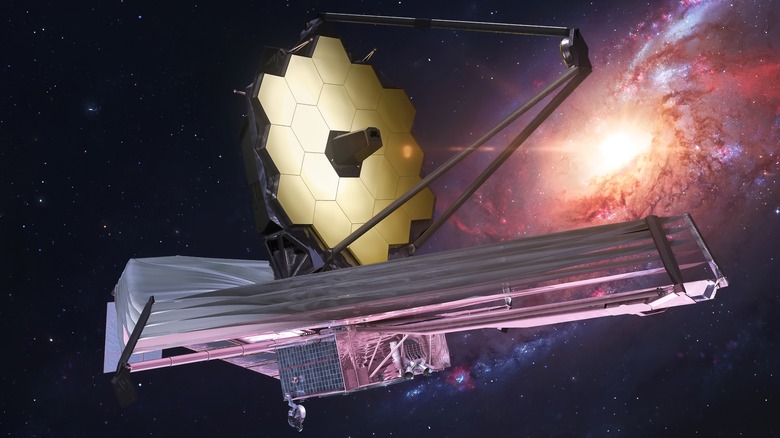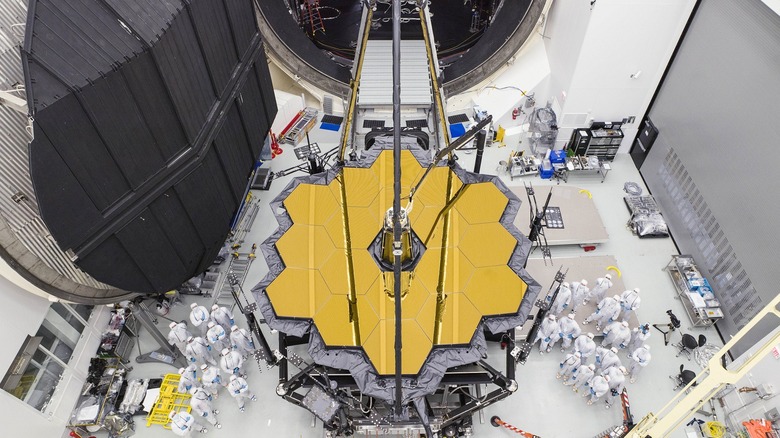James Webb Telescope Suffers Micrometeoroid Impact
The brand new James Webb Space Telescope, still in its commissioning phase and getting ready to release its first full-color images next month, has been struck by a small meteoroid. NASA reported on June 8 that the telescope had been struck sometime between May 23 and May 25, impacting one of the primary mirror segments. However, the agency says that the telescope is still capable of fulfilling all its mission requirements, although there will be some small effects on the data the telescope collects.
The telescope has a large primary mirror measuring 6.5 meters across, made up of 18 different hexagonal segments. The small piece of meteoroid impacted segment C3, which is located toward the bottom right of the mirror. The meteoroid was tiny, around the size of a grain of dust, and so is a type called a micrometeoroid. But these particles can travel at extremely high speeds, including in the region around Webb's orbit around the sun at the second Sun-Earth Lagrange point, which is why they can cause damage to space hardware.
Fortunately, engineers anticipated that micrometeoroids could be a problem for Webb and designed it accordingly. "We always knew that Webb would have to weather the space environment, which includes harsh ultraviolet light and charged particles from the Sun, cosmic rays from exotic sources in the galaxy, and occasional strikes by micrometeoroids within our solar system," said the Webb technical deputy project manager, NASA's Paul Geithner. "We designed and built Webb with performance margin – optical, thermal, electrical, mechanical – to ensure it can perform its ambitious science mission even after many years in space."
What effects will the impact have on the telescope?
Despite the team's precautions, the impact in May was larger than those which had been modeled so it will have some effects on the data which Webb collects (via NASA). As James Webb doesn't have cameras, it isn't possible for the team on the ground to see exactly what effects the impact had, so they are basing this announcement on the data they are getting from the telescope.
The effects on data are only "marginally detectable," according to NASA, though they will continue to assess the impact. An advantage of the 18-segment mirror design is that each segment can be moved and adjusted independently, which should help to minimize any distortions caused by the impact. Engineers have already made some adjustments to segment C3 to correct for distortions and will continue tweaking its position as needed.
This is the fifth impact on the telescope since its launch, with the four previous impacts being much smaller. These are impossible to avoid because of the nature of the space environment, and it is expected that more will occur in the future.
"With Webb's mirrors exposed to space, we expected that occasional micrometeoroid impacts would gracefully degrade telescope performance over time," said Webb's optical telescope element manager, NASA's Lee Feinberg. "We will use this flight data to update our analysis of performance over time and also develop operational approaches to assure we maximize the imaging performance of Webb to the best extent possible for many years to come."

